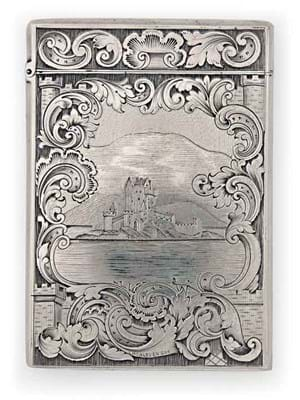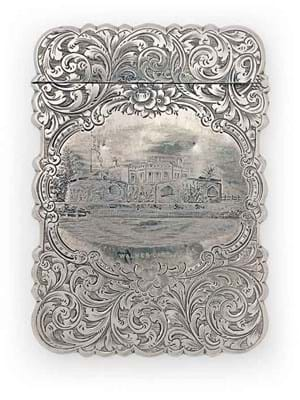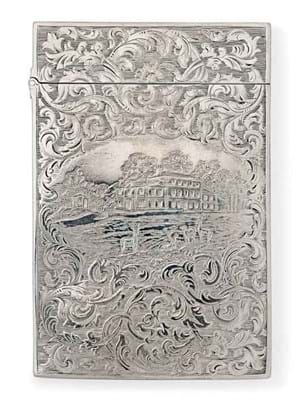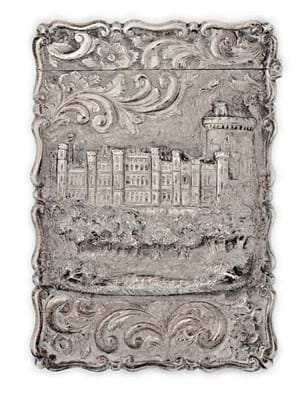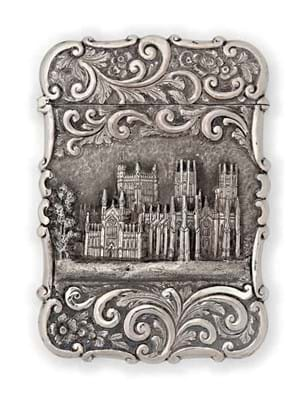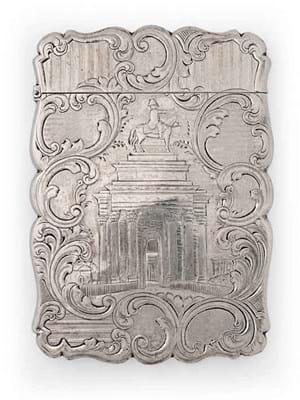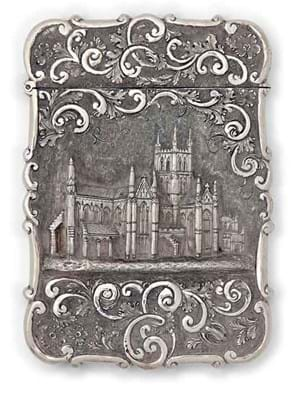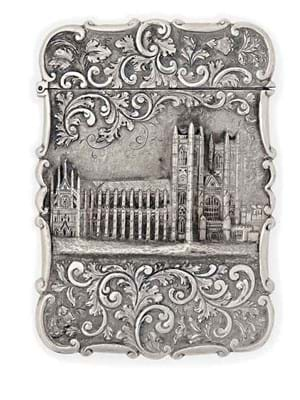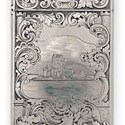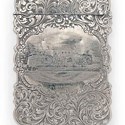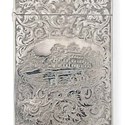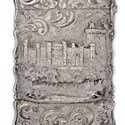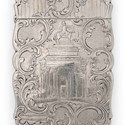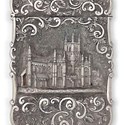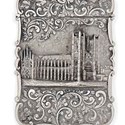There are collectors who only buy spoons, or vesta cases, while others eschew all in favour of the humble nutmeg grater or card cases.
It was the latter that occupied a small 38-lot section of a regular Tuesday Interiors auction held by Christie's South Kensington earlier this month.
There was no information given about the vendor or provenance in the catalogue but it seems that they were a assembed by a serious card-case collector and put together largely through the English trade.
In total, just over 70 examples were offered, most as single cases but with around a dozen multiple lots containing anything from two to ten examples.
When it comes to collecting card cases - small, rectangular, silver, flip-top receptacles made to contain visiting cards that were popular in the mid 19th century - the attraction and value is all about the decoration chased or engraved to the front.
The more obscure the building (and it often is a building) or the setting depicted, the more demand is ramped up. Cases with popular scenes, like the Houses of Parliament or Windsor Castle, by contrast, are more affordable.
Prices for card cases have softened slightly in recent years, so Christie's were deliberately cautious with their guides, especially given the number on offer at the sale on March 12.
Attractive guides, plus ensuring that the collection was publicised to all the likely candidates on the auctioneers' mailing list, brought out a good mix of specialist collectors, dealers and some additional crossover demand from non-specialist Christie's Interiors clients as well as some Chinese bidders.
As a result, all bar eight lots sold and a number were disputed well past estimate.
The most popular lots were those rare views that made multiple-estimate sums, while most of the failures were either the cheaper group lots or cases with standard views of Windsor Castle and Westminster Abbey which proved hard to shift at any price.
This is the kind of typical price polarisation that affects so many areas of the market these days.
Most of the decoration on card cases is derived from print sources.
"There was a certain amount of discussion as to where some of the scenes were," said Christie's specialist Michael Prevezer.
James Nasmyth Card Case
So it was with what proved to be the top-priced case of the collection, a Scottish case marked for James Nasmyth of Edinburgh 1845. This depicted a turreted building on the edge of a lake with the engraved inscription Loch Leven Cas.,but the auctioneers did not think it matched print views and instead catalogued it as showing another the famous Scottish island fortress, Eileen Donan Castle. In the event it outstripped its £1000-1500 guide to take £4500.
Another popular case was an example marked for Wheeler and Cronin, 1852,engraved with a view of Walmer Castle, one of Henry VIII's defensive coastal fortresses. Here an estimate of £600-800 was overturned with the hammer falling at £3000.
A third high-flyer was a Sheffield made case marked for Henry Wilkinson 1851featuring a country house in a parkland setting with deer to the foreground. This was later identified as a view of Norton Hall near Sheffield and the estimate upped to £1000-1500 a level which is still outstripped selling for £3800.
Another interesting observation made by Mr Prevezer was that hitherto demand seemed to be centred on cases with high-relief scenes. But both the Eileen Donan and Walmer Castle scenes were shallow engraved, so buyers no longer appear to be basing their choice solely on this distinction.
These three cases are shown in the slideshow at the top of this page alongside a selection of other examples from the collection.

